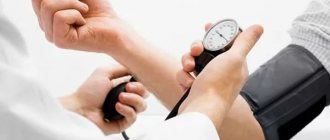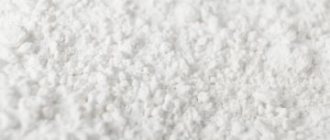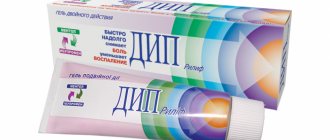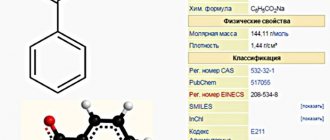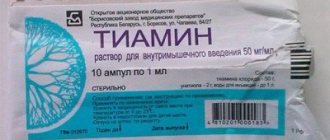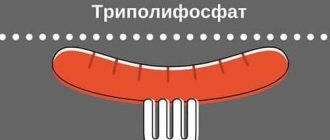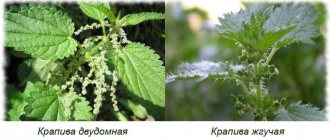Corvalol is a popular medicine, especially among older people. Available in the form of drops and tablets. In the minds of many, it is used when “the heart is in pain.” In fact, this combination drug belongs to the group of sedatives and hypnotics. It is not easy to find out the whole truth about Corvalol. Despite the fact that the drug is decades old, even doctors have ambivalent attitudes towards it.
Professor Pavel Vorobyov, head of an organization engaged in research into cost-effectiveness in pharmacology, believes that Corvalol should be classified as a hard drug and sold only by prescription. Its use prevents patients from seeing a doctor on time and hides the symptoms of serious diseases.
Also, uncontrolled use of the drug can lead to the development of side effects, addiction and poisoning.
Compound
The effects of taking Corvalol are easily explained by its composition.
Alpha-bromoisovaleric acid ethyl ester has a sedative effect similar to valerian. It helps relax the smooth muscles of internal organs, slows down the transmission of nerve impulses and reduces blood pressure.
Phenobarbital in small dosages causes drowsiness, relaxation, and also relaxes smooth muscles. Increases the resistance of the nervous system to irritants, promotes the onset of sleep, but the sleep that occurs is not physiological.
Peppermint leaf oil promotes dilatation of blood vessels in the heart and brain. Strengthens intestinal contractility.
The combination of these components enhances their effect.
Corvalol
Corvalol has long been not just a medicine, but an element of a subculture for older people, which is as integral an attribute of their lives as a cup of tea with their favorite TV series. Its moderate sedative effect allows the drug to be used as a sedative for sleep disorders, increased irritability and neuroses, and the vasodilating effect helps to correct functional abnormalities of the cardiovascular system. Corvalol is also a mild antispasmodic, the action of which, however, is quite sufficient to relieve intestinal spasms. Corvalol contains three pharmacologically active components, each of which has its own exclusive role. Ethyl ester of alpha-bromoisovaleric acid (ethylbromoisovalerianate), by analogy with the effect of valerian, has a sedative and antispasmodic effect. This therapeutically significant “doublet” is based on irritation of receptors, primarily in the nasopharynx and oral cavity, suppression of reflex sensitivity in the central parts of the nervous system and effects on nerve cells and subcortical structures of the brain in terms of suppressing the conduction of nerve impulses. Under the influence of ethylbromoisovalerate, the activity of central vasomotor areas also decreases and an antispasmodic effect is noted on smooth muscles. Phenobarbital, being a psychotropic substance, potentiates the sedative effect of other components of the drug, reduces excitation of the central nervous system and facilitates falling asleep.
Peppermint oil has a reflex vasodilating, antispasmodic, disinfecting effect, and facilitates the discharge of bile. Peppermint can be an active player in the pharmacological arena due to its “technical and tactical” characteristics, including the ability to irritate the so-called “cold” receptors concentrated in the oral mucosa, as well as to reflexively increase the lumen of blood vessels, especially the heart and brain. In addition to this, mint eliminates the phenomena of increased gas formation, stimulating intestinal motility due to irritation of receptors densely dotting the mucous membrane of the digestive tract.
Corvalol is available in two dosage forms: the incomparably more popular drops and tablets. The dosage of Corvalol is determined by the doctor individually for each specific patient. The drug should be taken, both in drops and tablets, before meals. The drops are pre-dissolved in a small (20-30 ml) amount of water. The frequency of administration is 2-3 times a day. If there is a history of palpitations, the single dose may be higher. According to general recommendations, children, depending on age and existing abnormalities, are prescribed from 3 to 15 drops (tablets are not intended for children). The duration of use of Corvalol is also determined by the doctor. Considering the presence of a psychotropic substance in the drug, excessive amateur activity in relation to taking Corvalol is strictly contraindicated.
When to use
The drug cannot treat any serious diseases. It is usually taken for dysfunction without serious pathologies (functional impairment). Corvalol is taken to reduce the excitability of the nervous system and as a drug with some vasodilating effect. It can help with increased irritability, agitation with difficulty falling asleep and body reactions such as sweating, redness, weakness (manifestations of autonomic reactions of the nervous system). Sometimes to relieve intestinal spasms.
The main purpose of taking Corvalol is to reduce the excitability of the nervous system and slightly dilate blood vessels.
The General Secretary of the Russian Scientific Medical Society of Therapists, Andrei Spassky, believes that the drug is beneficial. It helps with heart disease, rhythm disturbances, and cardioneurosis. There are about 17 million people suffering from coronary heart disease in Russia. Approximately every second person uses such drugs, because they have a fairly good antiarrhythmic effect.
Placebo effect
The literature describes placebo effects for Corvalol and the similar composition Valocordin1. Thus, elderly people living abroad, former citizens of Russia (USSR), sometimes at very old age, asked to send these particular drugs, because previously they “helped great.” What “used to be” was 20 years ago, they were younger and healthier, did not interest anyone. Explanations from local doctors and relatives that there are more effective, modern medicines did not reassure them. But the most interesting thing is that the new medications themselves did not help. The “tried and true” were needed. Then they resorted to a combination of active ingredients according to the instructions from Corvalol to produce exactly the same ones. But no, only the “old” Valocordin or Corvalol were needed. When patients did get “their” drugs, they began taking them with great pleasure and hope. Usually they helped, just as “effectively” as many years ago.
For many elderly patients, it is necessary to weigh the benefits and possible harm, additional risks when taking Corvalol. Often this is psychological dependence and the effect of self-hypnosis.
Do not take medications on your own and always consult a doctor.
Reactions, consequences of poisoning
In large doses, Corvalol reduces the metabolic rate and lowers body temperature due to its effect on the central mechanisms of thermoregulation. Reduces blood pressure. As a result, in acute poisoning, a decrease in renal filtration and the development of oliguria and anuria are possible.
The drug component phenobarbital significantly inhibits psychomotor reactions and impairs coordination of movements. Some doctors see this as an additional provoking factor for falls in older people with subsequent hip fractures. Osteoporosis, many contraindications to surgery for treatment, a long recovery period and bed rest can cause congestion in the lungs, the development of pneumonia, and ultimately lead to death.
The use of phenobarbital with alcohol not only greatly slows down psychomotor reactions and leads to impaired coordination. Overdose can cause coma and death. Long-term use of the drug causes fatigue, deterioration of memory and concentration, depression, headache, and tremor.
The instructions for medical use of the drug Corvalol do not prohibit the use of the drug simultaneously with alcohol. At the same time, the Roszdravnadzor database recorded adverse reactions when taking the drug Corvalol, which in some cases led to death. These cases were associated with its uncontrolled use in combination with alcohol.
The instructions for Corvalol do not prohibit the use of the drug simultaneously with alcohol, but cases of death have been recorded when it is taken uncontrolled along with alcohol.
The effect of Corvalol and what it helps with
The main effect of the drug is a sedative effect. Additional actions include dilating small blood vessels, relieving spasms, and reducing muscle tone. The benefit (therapeutic effect) of Corvalol is its rapid sedative and analgesic effect. This is useful for reactions to stress and mental trauma, neurotic conditions, and all types of psychosomatic diseases: hypertension, palpitations, asthma attacks, a feeling of a lump in the throat, irritable bowel syndrome, itchy skin and rashes.
Corvalol is not classified as a potent drug (despite the fact that it contains them) and therefore can be easily purchased at a pharmacy without a doctor's prescription. According to the DSM Group and the RBC portal, Corvalol is one of the best-selling drugs in the country in terms of the number of packages, second only to some painkillers.
According to surveys of doctors, it is extremely rarely recommended for use for therapeutic purposes, and only as a one-time (one-time) dose. From which we can conclude that the majority of purchased Corvalol is not used as prescribed by a doctor.
What is the reason for such a widespread use of Corvalol (and its analogues - valocordin, valoserdin)?
In our opinion, there are three main reasons
- Long-term history of admission. The drug has been known since “Soviet times”. Due to the fact that phenobarbital in combination with alcohol has a strong inhibitory effect on the nervous system, after taking Corvalol, the severity of symptoms of psychosomatic origin decreases. This is where the illusion arises that the drug helps with almost all diseases: from hypertension to alcohol hangover, from heart pain to seizures. That is, due to the specificity of its action, Corvalol can cause relief (albeit temporary) in many painful conditions.
- Lack of accessible, reliable other sedatives. Psychiatric illiteracy of the population. Low appeal to psychotherapists and psychiatrists. Often, with many mental disorders caused by overexcitation of the nervous system (reaction to stress, neuroses, psychosomatic diseases, insomnia, etc.), people do not turn to a specialist psychotherapist, but tend to seek relief by taking some kind of universal sedative.
- A large number of people dependent on Corvalol. Also, people with alcohol addiction often use alcohol-containing medications as a substitute for alcoholic beverages, using Corvalol, Valocordin, tinctures of hawthorn, valerian, motherwort, etc. Dependence on Corvalol has all the signs of drug addiction: mental, then physical dependence on Corvalol is formed. According to the observations of psychiatrists and psychiatrists - narcologists, there are a lot of Corvalol addicts among adults and elderly people.
Other Adverse Effects
Self-medication with Corvalol can mask the symptoms of more serious diseases, such as cancer. The components of the drug cannot be called beneficial to health. In addition, the drug may have a pronounced placebo effect. On the one hand, this is good and increases its effectiveness. On the other hand, patients stop taking medications that are really necessary for diseases of the cardiovascular system. Patient adherence to treatment is a big problem in cardiology.
Yes, perhaps they act more slowly and do not bring relief immediately, but it is their use that increases life expectancy and reduces the risk of heart attacks and strokes (statins, antihypertensive drugs, antiplatelet agents). Because they act on the mechanisms of disease development, and do not simply mask the symptoms.
Corvalol drops at night can become for an elderly person an imaginary concern for their health and a ritual of self-soothing. Then, if symptoms intensify or new ones appear, he does not go for examination, but simply increases the dose. This is especially true for residents of areas with low access to medical care.
Habituation and Dependence
Addiction to frequent uncontrolled use often causes addiction and dependence. Phenobarbital has an accumulation effect in the body. Also, over time, with long-term use, the body’s sensitivity to the previous dose decreases and the person begins to gradually increase it, since he does not receive relief as before.
A person cannot stop taking it on his own, as a strong withdrawal syndrome develops. In mild cases, withdrawal syndrome is manifested by anxiety, tremors, increasing weakness throughout the body, dizziness, nausea, vomiting, sleep disturbance, dizziness, and the development of fainting. In severe cases, convulsions and delirium are possible.
Harm of Corvalol.
With a single dose, the harm of Corvalol can only consist of possible allergic reactions, increased inhibitory effects of other medications taken, and overdose when taken in large doses. The main danger lies in cases of long-term and constant use of Corvalol. In such cases, the nervous system suffers: toxic encephalopathy develops with sleep disturbances, memory loss (even dementia), polyneuropathy; when Corvalol is withdrawn, convulsions and a withdrawal state with psychosis may develop. Long-term use of Corvalol is harmful with a high risk of developing mental and physical dependence, because, as written above, it contains two strong psychoactive substances: ethyl alcohol and phenobarbital. Treatment of encephalopathy and addiction caused by Corvalol may require hospitalization.
In conclusion, I would like to point out that medications should be taken only as prescribed by a doctor. Self-medication is dangerous!
Corvalol contains two strong psychotropic components: ethyl alcohol and phenobarbital. With constant use, it causes dependence and the need to take larger and larger doses, and after stopping its use or reducing the dose, withdrawal syndrome develops. Be careful with Corvalol and you will be healthier!
